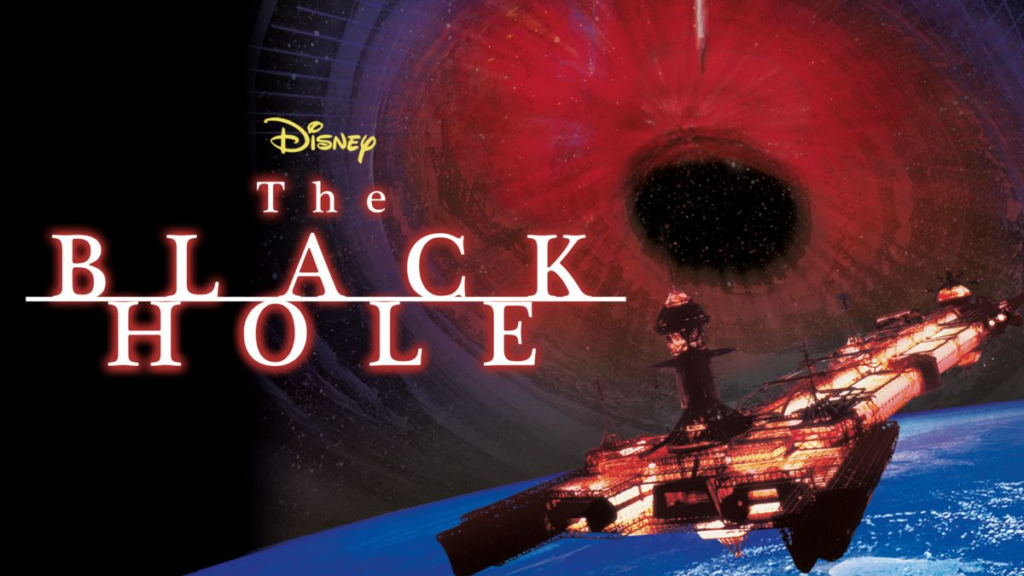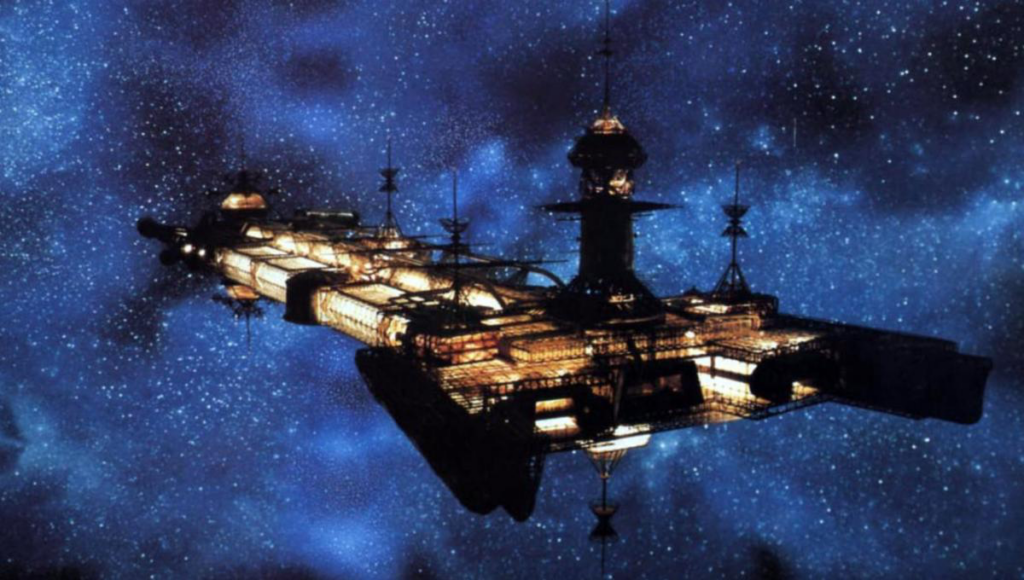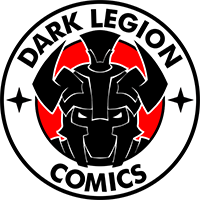RE:View The Black Hole

I recently watched The Black Hole on the same day that I saw Doctor Strange and the Multiverse of Madness.
When I got home from the theater my kids were watching it and I sat down with them intending to make fun.
I couldn’t do it. Having just watched Doctor Strange 2, The Black Hole appeared to be a masterpiece of subtly layered meta contexts and deeply structured storytelling. I decided, wisely, to put off doing a RE:View of it until the trauma of Strange had worn off.
And now that the pain of the M-She-U’s latest cinema stain has faded I can safely say that Disney’s The Black Hole isn’t great in the least, but it is rather underrated. And has a few things going for it that modern filmmakers can’t equal today.
The first thing to remember about the Black Hole is that it was made during Disney’s late post-Walt period. His son-in-law Ron Miller had met his wife (Miss Disney) on a blind date when he was in college. He married her and then joined the Army as an officer because the draft was on. After that, he played professionally for the Rams.
It is an unquestioned truism among pro players that what NFL really stands for is: Not For Long. When his career ended early, his father-in-law brought him into the family business. Miller was an effective producer. He could get a film crew organized and made sure the things that needed to happen on set, happened. This really is an extremely valued and prized skill set in Hollywood. Each film set is going to be unique so each one is going to be an exercise in flying by the seat of your pants. And Ron Miller was good at it.
When Walt and then Roy cashed in their chips, Miller was the natural choice to become president of the company. That isn’t to say he was a good choice. Ron Miller was a Peter Principal promotee. He was excellent at his job right up until he was promoted out of it. The one part of the career that Miller couldn’t handle was creativity. He had nothing there.
The 1970s were definitely a period of creative malaise at Disney and Miller was trying to fight against it. Most of the animated films were abandoned ideas that had been fished out of Walt Disney’s trash can. And the live-action films were juvenile comedies starring Kurt Russel and Wally Cox. The plots could be boiled down to “My daughter is having her wedding in my cream pie factory. I don’t want anything to go wrong!”
Ten years in and the whole company knew that they had an imagination problem and Walt’s trash can was now empty.
They knew they couldn’t keep going as they were going. They just couldn’t figure out what else to do?
When Star Wars blew the doors off. Ron Miller’s ears perked up. Star Wars was obviously a kid’s movie, and that was what Disney did better than anyone. Consequently, Miller decided Disney’s next big-budget film was going to be a kid’s sci-fi flick. An old property in development hell was dusted off, rewritten, and put into active production.
It was the start of Disney’s, Daring But Deadly period of box office failures. It was the first of a string of over-priced flops like Return to Oz, Tron, Dragon Slayer, and The Black Cauldron. The sad part is that all of these films had something going for them but that something was not box office receipts.
So, the first thing to remember about The Black Hole is that it is indeed meant to be a film for children. This thing is not for grown-ups. We can tolerate it if we remember that going in, but it is not for us.
Realistically, this movie is about as good as 20,000 Leagues Under the Sea which had still made money for Disney the last time it went into rerelease in 1971.
The first problem was casting. Sigourney Weaver was originally slated for the part of Dr. McRea, but she managed to miss that career stain because somebody in casting didn’t like her name. Next Jennifer O’Neil got the nod. Her name was pronounceable so all good there. And she was pretty well known in the 1970s but unfortunately, Disney demanded that she cut her hair short for the part because of zero G. She got drunk to get through the ordeal and crashed her car on the way home. O’Neil was out. Weaver had already signed for another science fiction movie called, Alien by then. So, they went with Yvette Mimieux. Don’t ask me why they thought that name was more pronounceable than Sigourney.
Yvette had all the hallmarks of being a last-minute choice casting decision. She needed to pass for a girl in her late twenties and she just couldn’t, not at 37. Also, she looked awful in short hair, they shouldn’t have insisted on it. It put about ten years on her. All of that wouldn’t have been a problem if she could act. Which she never could.
Maybe I’m being too harsh with her because all of the acting was a serious problem in this movie. Pretty much everyone was phoning it in. Disney was a bit of a joke in Hollywood by 1979 and the performers’ lack of interest in their own jobs showed through. On top of that, there were superfluous characters that were clearly left over from the script’s first incarnation as a mid-seventies disaster movie. They didn’t need to be there anymore.
And for a movie that was based in hard science, there were some ridiculous additions, like the girl communicating with the robot via “ESP.” Instead of a radio. That was a thing they did.
The robots are only terrible if you forget they were designed to amuse children. The eyes on Vincent were deliberately made oversized for this reason. Credit where it’s due, Roddy McDowall was trying harder than most of the crew.
The Black Hole is supposed to be a haunted house in space, which would have been great, but it has too many Ron Miller-era Disney touches to get there. Some parts are genuinely creepy, and I’ll get to those in a moment. But the uncanny tone keeps getting derailed by things that have no place in a horror film. A flashy laser battle is fine in a space opera but has no place in a haunted house. The primary foundation of horror is a severe imbalance of power. If you got laser guns you can fight back. The “zany” comedy provided by the floating trash can-bots repeatedly broke the tone.
Then there was Anthony Perkins who was so wooden it’s clear that he was getting no direction at all.
Which brings us to the film’s biggest problem. The incomprehensible choice of Gary Nelson as the director. This was a very big budget film for Disney in an age when there were plenty of good film directors to go around. But Disney chose to go with a man who had nothing but TV credits to his name. Okay, maybe acceptable if he was the new kid on the block and was showing a lot of talent. But this guy’s first directing credit was in 1962. From what I can tell, a producer hired a buddy of his or Disney went cheap on the talent.
All that said, there were a few things The Black Hole had going for it.
Maximilian Schell had clearly decided that since no one else was trying, that left a lot more scenery that could be chewed all by himself. And devour it he did. He earned his paycheck as the ‘I don’t care about the human race! So long as my experiment succeeds!’ mad scientist. He was a joy to watch as the Evil Reinhardt.
And speaking of Evil, the chief bad guy robot Maximillian brought a lot to the party as well with his red carapace and almost featureless, yet still menacing “face.”

His spinning stick blender arms were a nice touch. Those arms were instrumental in giving Anthony Perkins his only good scene in the movie. It must have been the one time he got direction but he did such a good job of acting like his heart was getting chopped out that I had remembered the scene as being bloody body horror on a par with the chest-burster from Alien. But on RE:Viewing ™ I was surprised to see there was no blood at all. It was all Tony Perkins.
Next, the music is grand, vast, and has strong overtones of mystery to it. The French horns provide a base layer of menace that builds. The strings are high and flat. The whole piece repeats constantly giving you an impression of events that are swirling and funneling downward.
John Barry was a veteran motion picture composer when he wrote this music. He was best known for his work on James Bond films, and you can definitely spot the similarities once you are looking for them. But he had also done everything from Born Free to the Cotton Club.
The black hole itself has an eerie beauty to it. Given that this was shot in 1979, the effects had to be practical. The visual of the black hole itself was created by forming a whirlpool in a round Plexiglas water tank and adding different colors of paint. Combined with Barry’s music the overall appearance brings a delightful shiver. And scientifically, its appearance is not out of the question. So long as the light and matter haven’t reached the event horizon yet, they should remain visible.
Part of the reason that I had never been able to appreciate the visuals before was that I had first watched it via a rented VHS tape on an 18-inch screen. If you have a modern oversized flatscreen you can get an idea of the impact this film was supposed to have. It really was meant to be seen in a theater.
The Cygnus model design is incredible. The biggest problem with model design for the past thirty years is that almost every ship has a design aesthetic that is really no different from Star Wars. If you put any of them in a Star Wars movie, they wouldn’t look out of place. But the Cygnus, would.
When the crew of the Palomino first flies around the Cygnus, it’s dark so you only see pipes and scaffolding. But then when it is lit from the inside, the entire ship takes on a cathedral-like appearance. What had been crude and functional when the lights were out, takes on a more delicate, fragile aspect like a Victorian greenhouse.

The interior spaces of the Cygnus are vast and soaring. You get a strong impression of its immensity when the crew has to take a tram to travel its cavernous length. This contrasts with the crew quarters which are tiny, spartan, and cell-like. As if they were designed to diminish their occupants as much as possible given all the space that is being wasted on the rest of the ship.
The bridge was a titanic gallery, multitiered with two-story tall view screens. The bridge reinforces this aesthetic of a cathedral in space.

When the Palomino crew boards, they find only robots and one human, the leader of the expedition Dr. Hans Reinhardt. He claims the crew abandoned the ship when they got the recall order from Earth and he doesn’t know what happened to him.
But did they?
The robots, except for the tall and threatening Maximillian, are all robed with featureless domes on their heads. But in the best scene of the movie, the captain sees that these robots are obviously conducting a funeral for one of their number. There is clearly a quiet reverence in this scene.

The robots are of course the crew of the Cygnus. Reinhardt with the help of Maximillian turned them into things that were little more than zombies.

And now we are back to weak points. The movie was shot without an ending. They had no idea what to do about going into the Black Hole other than they knew they had to go in it, see Chekov’s Gun. So they went with the weird and unsatisfactory ending of sending Reinhardt and Maximillian to hell and the crew of the Palamino to Heaven. And then the good guys were back in space on the other side.
Instead of being crushed into a mass of component sub-particles.
And now we reach the important question of a RE:View.
Does it hold up?
Surprisingly, yes.
The Black Hole was always a deeply flawed film. But it has elements that have made it surprisingly watchable in this day and age of lazy CGI everything. There is a craftsmanship to the Black Hole that despite its problems is more watchable today than when it was first released.
If you have splurged on a big-screen TV, you should give it another look.

